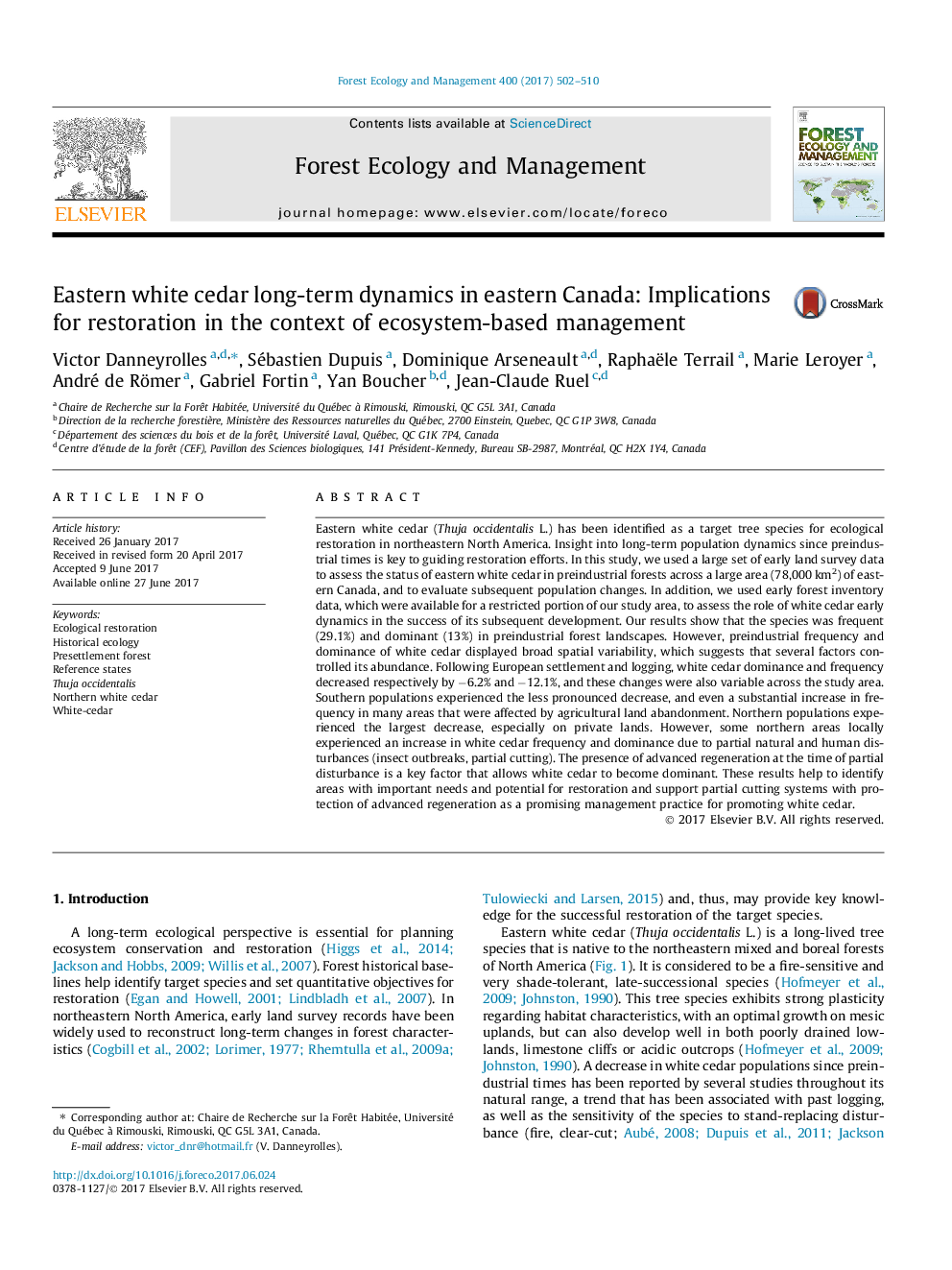| Article ID | Journal | Published Year | Pages | File Type |
|---|---|---|---|---|
| 6459289 | Forest Ecology and Management | 2017 | 9 Pages |
â¢Changes in white cedar abundance since the preindustrial era have been variable.â¢It exists an important potential for white cedar restoration at its northeastern range.â¢Establishment and release phases are key to maintain white cedar in stands.â¢Partial cutting with protection of regeneration is recommended for cedar restoration.
Eastern white cedar (Thuja occidentalis L.) has been identified as a target tree species for ecological restoration in northeastern North America. Insight into long-term population dynamics since preindustrial times is key to guiding restoration efforts. In this study, we used a large set of early land survey data to assess the status of eastern white cedar in preindustrial forests across a large area (78,000Â km2) of eastern Canada, and to evaluate subsequent population changes. In addition, we used early forest inventory data, which were available for a restricted portion of our study area, to assess the role of white cedar early dynamics in the success of its subsequent development. Our results show that the species was frequent (29.1%) and dominant (13%) in preindustrial forest landscapes. However, preindustrial frequency and dominance of white cedar displayed broad spatial variability, which suggests that several factors controlled its abundance. Following European settlement and logging, white cedar dominance and frequency decreased respectively by â6.2% and â12.1%, and these changes were also variable across the study area. Southern populations experienced the less pronounced decrease, and even a substantial increase in frequency in many areas that were affected by agricultural land abandonment. Northern populations experienced the largest decrease, especially on private lands. However, some northern areas locally experienced an increase in white cedar frequency and dominance due to partial natural and human disturbances (insect outbreaks, partial cutting). The presence of advanced regeneration at the time of partial disturbance is a key factor that allows white cedar to become dominant. These results help to identify areas with important needs and potential for restoration and support partial cutting systems with protection of advanced regeneration as a promising management practice for promoting white cedar.
